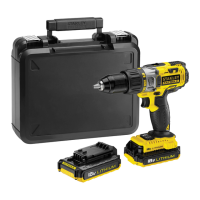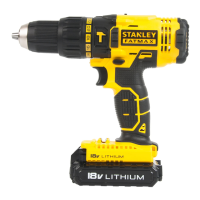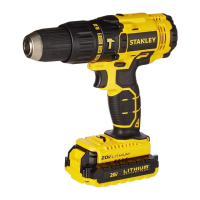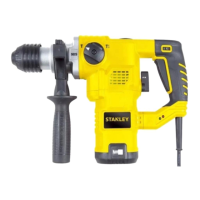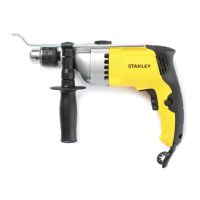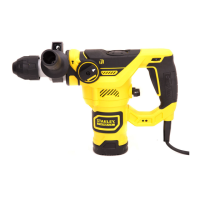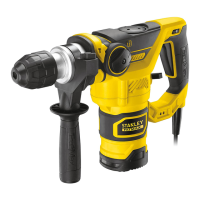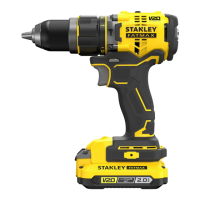HD45 User Manual ◄ 5
Always observe safety symbols. They are included for your safety and for the protection of the tool.
LOCAL SAFETY REGULATIONS
Enter any local safety regulations here. Keep these instructions in an area accessible to the operator and
maintenance personnel.
Safety symbols and signal words, as shown below, are used to emphasize all operator, maintenance and repair
actions which, if not strictly followed, could result in a life-threatening situation, bodily injury or damage to equipment.
This is the safety alert symbol. It is used to alert you to potential personal injury
hazards. Obey all safety messages that follow this symbol to avoid possible
injury or death.
This safety alert and signal word indicates an imminently hazardous situation
which, if not avoided, will result in death or serious injury.
This safety alert and signal word indicates a potentially hazardous situation
which, if not avoided, could result in death or serious injury.
This safety alert and signal word indicates a potentially hazardous situation
which, if not avoided, could result in death or serious injury.
This signal word indicates a potentially hazardous situation which, if not avoided,
may result in property damage.
This signal word indicates a situation which, if not avoided, will result in damage
to the equipment.
This signal word indicates a situation which, if not avoided, may result in damage
to the equipment.
Tool operators and maintenance personnel must always
comply with the safety precautions given in this manual
and on the stickers and tags attached to the tool and
hose.
These safety precautions are given for your safety.
Review them carefully before operating the tool and
before performing general maintenance or repairs.
Supervising personnel should develop additional
precautions relating to the specic work area and local
safety regulations. If so, place the added precautions in
the space provided in this manual.
The model HD45 Hydraulic Hammer Drill will provide
safe and dependable service if operated in accordance
with the instructions given in this manual. Read and
understand this manual and any stickers and tags
attached to the tool and hose before operation. Failure
to do so could result in personal injury or equipment
damage.
• The operator must start in a work area without
bystanders. Flying debris can cause serious injury.
• Do not operate the tool unless thoroughly trained
or under the supervision of an instructor. Establish
a training program for all operators to ensure safe
operation.
• Do not operate the tool in explosive atmospheres,
such as in the presence of ammable liquids, gases
or dust. Power tools create sparks which may ignite
the dust or fumes.
• Operators and maintenance personnel shall be able
to physically handle the bulk, weight and power of
the tool.
• Always wear safety equipment such as goggles, ear
and head protection and safety shoes at all times
when operating the tool. Use gloves and aprons
when necessary.
• The operator must be familiar with all prohibited work
areas such as excessive slopes and dangerous
terrain conditions.
• Do not inspect, clean or replace any parts if the
hydraulic power source is connected. Do not inspect
or clean the tool while the hydraulic power source is
connected. Accidental engagement of the tool can
cause serious injury.
• Keep hands away from rotating chuck or drill bits.
• During operation, do not contact mechanisms, ac-
cessories or hardware as they can become very hot;
use your Personal Protection Equipment (PPE).
• Always connect hoses to the tool hose couplers
before energizing the hydraulic power source. Be
sure all hose connections are tight and are in good
condition.
• Do not operate the tool at oil temperatures above
140 °F/60 °C. Operation at higher temperatures can
cause higher than normal temperatures at the tool
which can result in operator discomfort.
• When using a rotary percussive tool to perform work
related activities, the operator can experience dis-
comfort in the hands, arms, shoulders, neck or other
parts of the body.
• If you experience numbness, tingling, pain or whit-
ening of the skin in your ngers or hands, stop using
the tool. Tell your employer and consult a physician.
• Check the vibration level after each service. If higher
than normal, contact your STANLEY dealer.
• Do not operate a damaged, improperly adjusted or
incompletely assembled hammer drill.
• Inspect the tool before each use and ensure all de-
cals are legible. Contact STANLEY if replacements
are needed.
• Do not wear loose tting clothing or jewelry when
operating the tool. Entanglement, choking, scalping
and laceration can occur if loose clothing, personal
jewelry, neck wear, hair or gloves are not kept away
from the rotating tool and its accessories.
• Keep all parts of your body away from the drill.
Maintain proper footing and balance at all times.
• Avoid unsuitable postures as these positions do
not allow for counteracting of normal or unexpected
movement of the tool, such as a sudden break of the
tool bit as they can cause injury.
• Ensure work piece is securely xed. Be aware that
failure of the work piece or accessories may gener-
ate high velocity projectiles.
• When working near electrical conductors, always
assume that all conductors are energized and
that insulation, clothing and hoses can conduct
electricity. Stay a safe distance away from electrical
conductors.
• If the hydraulic power supply has been interrupted,
place the hammer drill in the OFF position before
restarting the hydraulic power supply.
SAFETY PRECAUTIONS
